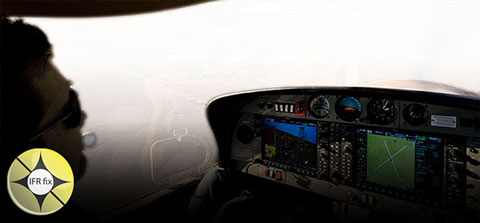
A wise saying of instrument training goes something like this: If you cross a fix at exactly 1500Z, you should have already crossed it mentally at 1458Z.
That’s what’s called “event planning”—a term that seems more suited to the preparations your FBO may be making for its annual holiday party. As a tidbit of flight-proficiency lingo, event planning means that when crossing the upcoming fix, it’s time to get ready for the next step in a known sequence.
The Nov. 4 IFR Fix discussed the possible decisions a pilot might make about preparing for breaking out of the clouds on the approach. Suppose the break-out occurs just at the minimum descent altitude on this unusual VOR-A approach that provides less than two nautical miles for descending from 1,400 feet at the FAF to the MDA of 640 feet. With 120 knots groundspeed, you must lose 760 feet in 57 seconds.
Pretty hectic. And then what? You’re still 448 feet above the runway, sailing along. That’s no time to be planning your future. If you thought about flying a circling approach, remember there’s no circling northeast of the runway.
The Air Safety Institute reviewed event planning in this Safety Advisor of operating and safety tips for pilots flying single-pilot IFR (SPIFR). “As each event happens and the required action has been taken, mentally define the next event and subsequent one. Some pilots think aloud, others silently. Either way, a systematic thought process helps prevent surprises and keeps you ahead of the aircraft.”
Maybe it’s been unfair to leave our hypothetical pilot aloft above RWY 15 during this analysis. But let’s keep him there a bit longer as we join him in pondering another feature of this approach.
Why is the approach, that occurs on a 155-degree magnetic course and leads to RWY 15, designated a VOR-A approach, not a straight-in approach?
Runway alignment isn’t the problem. The Aeronautical Information Manual Section 5-4-20 explains, “When either the normal rate of descent or the runway alignment factor of 30 degrees (15 degrees for GPS IAPs) is exceeded, a straight-in minimum is not published and a circling minimum applies.”
Landing straight-in is permitted if the approach went well, but if the wind is against you—remember that 120-knot groundspeed?—the circling approach is the better call.
Like this instrument series? Let us know what you think and send ideas for possible future tips.



